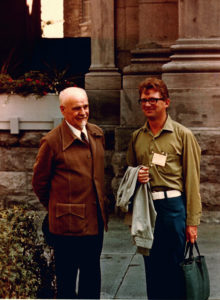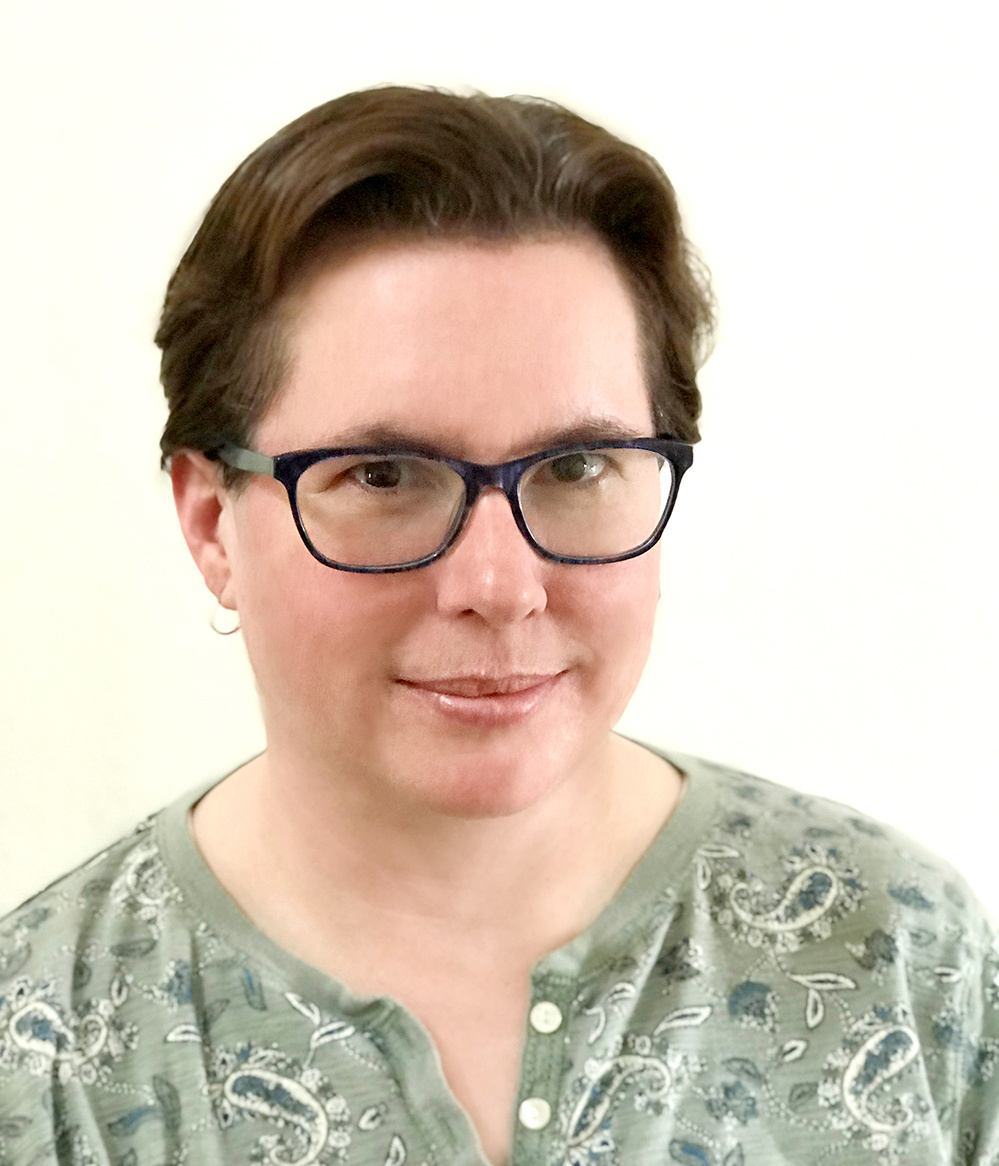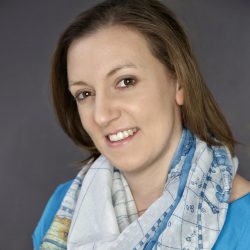Overexcitability, it seems, has become a controversial topic.
For almost forty years, overexcitability (OE) has been part of the conversation about the social and emotional experience of gifted people. Many gifted adults have seen themselves in descriptions of the various OEs, and many parents of gifted kids have recognized OE in their intense children. In this way, it’s undoubtedly been a source of comfort to many.
Some people, however, have decried OE as an excuse that deters people from getting help for genuine disorders. Others have questioned its relevance to giftedness. Still others, having read a bit of misinformation circulating in the blogosphere, are even skeptical that the concept is grounded in research.
In light of all of this, it’s worth revisiting the concept of overexcitability within the theory that put a name to it: the theory of positive disintegration (TPD). Without the framework provided by TPD, we miss the real essence of overexcitability and why it’s worth talking about at all—whether in the lives of those labeled “gifted” or those who have not been so labeled. So to further this conversation, we’ll present here the origins of the concept, explore the reason the concept found a home in gifted education, and conclude with some thoughts on why and how to use it in a way that lifts up the intense, sensitive souls of the world.
The Theoretical Background of Overexcitability
The construct of overexcitability (OE) is an integral part of the theory of positive disintegration, a theory of human development that was developed by Polish psychiatrist and psychologist, Kazimierz Dabrowski (1902-1980). Dabrowski perceived the OEs as a property of the nervous system and noted that these excitabilities appeared to be more prevalent among creative, talented, and sensitive people.
But Dabrowski didn’t pull the idea of OE out of thin air. We can find overexcitability described in the psychological and medical literature at least as far back as 1899, when a Scottish physician writing in The Lancet, Thomas Clouston, described a condition that is strikingly similar to Dabrowski’s description of OE, marked by “an undue re-activeness to mental and emotional stimuli which in ordinary children would evoke only slight response” (The Lancet, 1899, p. 292).
Dabrowski published his first English work describing “psychic overexcitability” in 1937. The work outlined the psychological bases of self-mutilation, an effort that built on his dissertation research on the psychological conditions for suicide—a topic that he was inspired to study after a close friend took his own life (Dombrowski, 1929). This monograph explicitly mentions psychomotor and emotional OEs and alludes vaguely to sensual and imaginational OEs. Intellectual OE did not appear until 1958, when Dabrowski published a book about “nervousness” in children and youth.
It was in a 1938 Polish-language paper, “Types of Increased Psychic Excitability,” that Dabrowski differentiated psychomotor, affective, imaginational, and sensual OE in detail. The Polish term for overexcitability, nadpobudliwość, is sometimes translated in online dictionaries as hyperactivity, irritability, and other synonyms that mean a person is easily stimulated. In North America, we in both the academic and popular TPD communities understand nadpobudliwość, as defined by Dabrowski, to have a different meaning in the context of his theory, encompassing something broader than mere hyperactivity.
In his early works, Dabrowski began to distinguish between global and narrow types of OE. The global types, he said, were developmentally positive, while the narrow types were less conducive to—or even barriers to—personal growth. That’s why, in orthodox TPD, the narrow type of OE suggests a limited developmental potential (Dabrowski, 1972). Each of the five forms of OE could be described as global or narrow. Moreover, Dabrowski would later go on to write that intellectual, imaginational, and especially emotional OE were the most important contributors to multilevel growth (Dabrowski, 1996).
Dabrowski was clear about the inherent difficulties of living with intensity and the impact of OE on the process of positive disintegration: being overexcitable leads to struggle and conflict, both internal and external.
“Types of Increased Psychic Excitability” is a seminal paper—the only full description of overexcitabilities that Dabrowski made. (Ed. Note: Readers may be interested to know that a translation of the paper is forthcoming in Volume #17 of Advanced Development Journal.) The paper ends with a note that it is “to be continued.” Clearly, Dabrowski had more work to do developing the concept of OE, though his work was interrupted by World War II and the subsequent communist takeover of Poland. The next published work elaborating on OE was therefore not released until 1959.
Dabrowski’s contemporaries studied phenomena that were similar to the OEs, as seen in papers about the history of attention-deficit/hyperactivity disorder (ADHD) (Bakker, 2010; Smith, 2014). It’s worth noting that Dabrowski talked very little about inattention as we now relate it to ADHD, though this might be due to the difference in clinical and educational settings during the time when he was developing his theory. He often used the terms “nervousness” and “psychic excitability” interchangeably, and he described other scholars’ (e.g., Janet) perspectives on nervousness before situating the concept in his theory of positive disintegration.
In the mid-1960s, Dabrowski left Poland with his wife and two daughters and established a new base for the theory in Canada, in both Quebec and Alberta. It was in Edmonton that he met Michael Piechowski, a PhD molecular biologist who found that he was captivated by psychology and went back to school for his second doctorate, this time in counseling psychology. Piechowski (2014) was particularly taken with the centrality of emotions in development in TPD—an idea that was considered radical at the time, but has since become broadly accepted, even common sense. When he left Alberta to attend the University of Wisconsin, Piechowski continued his collaborative work with Dabrowski long distance. Suffice it to say for now that Piechowski worked closely with Dabrowski on a large-scale, rigorous effort to collect data on the levels of development (Dabrowski & Piechowski, 1977). Piechowski’s (2008) contributions included, among other things, his development of the original Overexcitability Questionnaire (OEQ) and his analysis of the stacks and stacks of data their research produced.
Overexcitability and TPD in Gifted Education

In this piece, Piechowski suggested that the OEs could serve as a way of identifying gifted children. In 1991, the Columbus Group gave the idea of an intense lived experience of giftedness a further boost when they incorporated it into their phenomenological definition of giftedness as “asynchronous development” (Morelock, 1992; Silverman, 1997). This, in a nutshell, is how overexcitability was established as part of the social-emotional landscape of gifted education.
Piechowski’s chapter in New Voices, and his early work in general, celebrated the rich experience of life with overexcitability. Dabrowski’s theory removed the stigma of pathology from nervousness by stressing that being highly excitable does not impair cognitive functioning. Moreover, according to TPD, nervous people’s prognoses are especially positive when their OE is global rather than narrow—in other words, an all-encompassing aspect of their lived experience.
At the same time, overexcitability is surely a mixed blessing. Dabrowski was clear about the inherent difficulties of living with intensity and the impact of OE on the process of positive disintegration: being overexcitable leads to struggle and conflict, both internal and external. It is, after all, still disintegration, and even the positive kind is no walk in the park.
Enter the Dynamisms
Given these struggles, it’s understandable if some people—especially parents of overexcitable children—are skeptical of the usefulness of this frame. How do they know whether their disintegration is, in fact, the positive kind, not the path to oblivion taken by Dabrowski’s friend that inspired his dissertation study?
To address this concern, we come to another central concept of TPD: the dynamisms.
As we consider interventions to address what might look like psychological dysfunction, Dabrowski and Piechowski’s work suggests that we should view the overexcitable existence through a lens that reveals its blessings.
Dabrowski believed that dynamisms—essentially, intrapersonal dynamics—are the underlying forces that cause psychological disintegration and reintegration. They include things like guilt, autonomy, authentism, responsibility, and hierarchization (i.e., the process of discerning higher and lower paths), among many others.
The role of overexcitability in this process is to set the dynamisms in motion (Dabrowski, 1996; Piechowski, 1975). With a highly excitable physiological system—one that takes in copious amounts of information and tends to go into overdrive in an effort to process it all—a person is much more likely to have the abundant mental and emotional residue lying about their psyche, like fallen dry branches that catch fire to fuel positive disintegration.
Scholars of gifted education have criticized research on TPD’s developmental potential for its nearly exclusive focus on the OEs (e.g. Vuyk, Krieshok, & Kerr, 2016). These critics raise an important point: if overexcitability is valuable mainly because it fuels dynamisms and positive change, then why aren’t we studying the positive change more directly?
Once again, a bit of history helps us figure out why we are where we are. Piechowski chose to develop the concept of OE within the field of gifted education because there appeared to be a connection between OE and giftedness. Giftedness, after all, could be said to be equivalent to the special talents and intelligence that Dabrowski named as a third component to developmental potential in TPD. Moreover, Dabrowski (1996) and Piechowski (1975) chose OEs as the construct to study because they are the descriptive characteristics that are observable in children and adults. Dynamisms simply aren’t something we can study in children, even gifted children, although they are certainly seen in adolescents and young adults (Bailey, 2011; Jackson, Moyle, & Piechowski, 2009; Piechowski, 2014).
But though most researchers haven’t tackled dynamisms in their published work, they haven’t been completely ignored. Piechowski (1978, 1990, 1992, 1993, 2009) consistently wrote about the dynamisms in his case study work on exemplars, giving us evidence for his belief that overexcitability really is a more of a blessing—and a social good—than a curse.
Still a Challenge, Still Not a Pathology
In the years since Piechowski introduced the concept of OE to the gifted education world, graduate students have devoted their dissertations to studying whether OE is a good way to identify gifted children. Two recent meta-analyses (Steenbergen-Hu, 2017; Winkler & Voight, 2016) examined the research on OEs as related to giftedness, and the results indicate that while there are some strong connections between OE and giftedness—suggesting that it is indeed worth discussing with gifted parents and children—it is best to consider OE from the standpoint of the social-emotional experience rather than as a tool for identifying giftedness. This approach keeps overexcitability firmly grounded in the original theory of positive disintegration, where the added context of the dynamisms can offer reassurance to those who are concerned about the negative side of overexcitability, or about people who cite overexcitability as an excuse for any bad or maladjusted behavior, whether their own or their children’s. (We should not forget that in TPD, there is also such a thing as negative maladjustment.)
In particular, the connection between overexcitability and twice-exceptionality (i.e., the experience of being both intellectually gifted and experiencing a disability such as ADHD or anxiety, among many others, often abbreviated as 2e) has not been explored adequately by anyone, especially as it exists in adults. And since it’s in adults and adolescents that we see the dynamisms, the subject of overexcitability in 2e adults is a subject that is ripe for research that could have significant positive impact on many people’s lives.
Moreover, TPD is not against therapy or other interventions. Dabrowski was, after all, a clinician. His scholarly work was informed by clinical observations, and he intended for his theory to be a useful synthesis of research and practice. As the overexcitable and their parents consider therapy and other interventions to address what might look like psychological dysfunction, Dabrowski and Piechowski’s work suggests that we should look at the overexcitable existence through a lens that reveals its blessings as well. Throughout his career, Piechowski remained faithful to Dabrowski’s mission of depathologizing overexcitability. Piechowski’s 2014 book Mellow Out is the most complete modern treatment of OE available in any language, and his case studies on exemplars of multilevel development (1990, 1992, 2009) help illuminate critical concepts, including dynamisms, from the theory. Piechowski chose to emphasize the blessings of rich experience, and his decision allows the theory to continue serving as an alternative framework to pathologizing the intense experience of OEs and multilevel dynamisms.
Ultimately, deciding what to make of overexcitability will be an individual choice. As Piechowski has stated, this is a theory about inner change in the core of the self. Multilevel dynamisms can shape the development and provide guidance to those whose OE propels them to positive disintegration: by thinking carefully about their own needs and the needs of those close to them, they can discern the higher path and find the courage to set out on it.
References
Bailey, C. A. (2011). An examination of the relationships between ego development, Dabrowski’s theory of positive disintegration, and the behavioral characteristics of gifted adolescents. Gifted Child Quarterly, 55, 208–222. https://doi.org/10.1177/0016986211412180
Bakker, N. (2010). Before Ritalin: Children and neurasthenia in the Netherlands. Paedagogica Historica, 46(3), 383-401. https://doi.org/10.1080/00309230903387745
Dabrowski, C. (1937). Psychological bases of self-mutilation. Genetic Psychology Monographs, 19, 1-104.
Dabrowski, K. (1938). Typy wzmożonej pobudliwości psychicznej. [Types of increased psychic overexcitability] Biuletyn Instytutu Higieny Psychicznej, 1(3-4), 3-26.
Dabrowski, K. (1958). Nerwowość dzieci i młodzieży. [Nervousness of children and youth.] Warszawa: PZWS.
Dabrowski, K. (1959). Społeczno-wychowawcza psychiatria dziecięca. [Social-educational child psychiatry.] Warszawa: PZWL.
Dabrowski, K. (1972). Psychoneurosis is not an illness. London, England: Gryf.
Dabrowski, K. (1996). Multilevelness of emotional and instinctive functions. Lublin, Poland: Towarzystwo Naukowe Katolickiego Uniwersytetu Lubelskiego.
Dabrowski, K., & Piechowski, M. M. (1977). Theory of levels of emotional development: Vol. 2. From primary integration to self-actualization. Oceanside, NY: Dabor Science.
Dombrowski, C. (1929). Les conditions psychologiques du suicide. [The psychological conditions of suicide.] Geneve, Switzerland: Imprimerie du Commerce.
Jackson, P. S., Moyle, V. F., & Piechowski, M. M. (2009). Emotional life and psychotherapy of the gifted in light of Dabrowski’s theory. In L.V. Shavinina (Ed.), International handbook on giftedness (pp. 437-465). Netherlands: Springer.
Lancet, The (1899). States of over-excitability, hyper-sensitiveness, and mental explosiveness in children. The Lancet, 154 (3961), 292.
Morelock, M. J. (1992). Giftedness: The view from within. Understanding Our Gifted, 4(3), 11-15.
Piechowski, M. M. (1975). A theoretical and empirical approach to the study of development. Genetic Psychology Monographs, 92, 231-297.
Piechowski, M. M. (1978). Self-actualization as a developmental structure: A profile of Antoine de Saint-Exupéry. Genetic Psychology Monographs, 97, 181-242.
Piechowski, M. M. (1979). Developmental potential. In N. Colangelo & R. T. Zaffrann (Eds.), New voices in counseling the gifted (pp. 25-57). Dubuque, IA: Kendall/Hunt.
Piechowski, M. M. (1990). Inner growth and transformation in the life of Eleanor Roosevelt. Advanced Development, 2, 25-53.
Piechowski, M. M. (1992). Etty Hillesum: The thinking heart of the barracks. Advanced Development, 4, 105-118.
Piechowski, M. M. (1993). Is inner transformation a creative process? Creativity Research Journal, 6(1-2), 89-98.
Piechowski, M. M. (2008). Discovering Dabrowski’s theory. In S. Mendaglio (Ed.), Dabrowski’s theory of positive disintegration (pp. 41-77). Scottsdale, AZ: Great Potential Press.
Piechowski, M. M. (2009). Peace Pilgrim, exemplar of level V. Roeper Review, 31(2), 103-112.
Piechowski, M. M. (2014). “Mellow out,” they say. If I only could: Intensities and sensitivities of the young and bright (2nd Ed.) Unionville, NY: Royal Fireworks Press.
Silverman, L. K. (1997). The construct of asynchronous development. Peabody Journal of Education, 72 (3&4), 36-58.
Smith, M. (2014). The first hyperactive children: The rise of ADHD in historical perspective. Leidschrift, 29(2), 35-49.
Steenbergen-Hu, S. (2017). How exactly overexcitability relates to giftedness: A fine-grained look via findings of a new meta-analysis. NAGC Conceptual Foundations Network Newsletter, 44-49.
Vuyk, M. A., Krieshok, T. S., & Kerr, B. A. (2016). Openness to experience rather than overexcitabilities: Call it like it is. Gifted Child Quarterly, 60(3), 192–211. https://doi.org/10.1177/0016986216645407
Winkler, D., & Voight, A. (2016). Giftedness and overexcitability: Investigating the relationship using meta-analysis. Gifted Child Quarterly, 60(4), 243-257. https://doi.org/10.1177/0016986216657588





